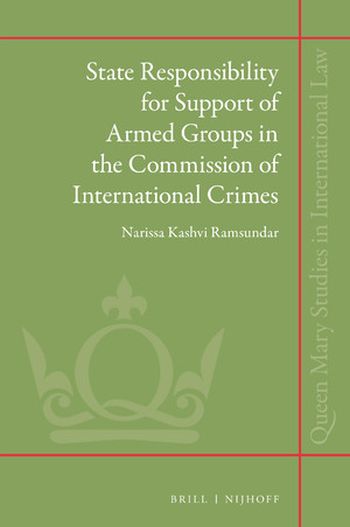
State Responsibility for the Support of Armed Groups in the Commission of International Crimes examines the law on attribution of conduct of individuals to states. Under established principles of international law, State responsibility only arises where armed groups act under the direction or control of the State, or are completely dependent on the State. These tests are under inclusive as they do not consider the different ways states can exert control over armed groups in the commission of international crimes. Ramsundar presents an interesting examination into the possibility of liberalization of the rules of State responsibility. The examination considers subtle ways states can exert control over armed groups in the commission of international crimes. Her proposal presents a compelling argument for widening the scope of responsibility to states through useful modifications to interpretation of the tests of control and dependence.